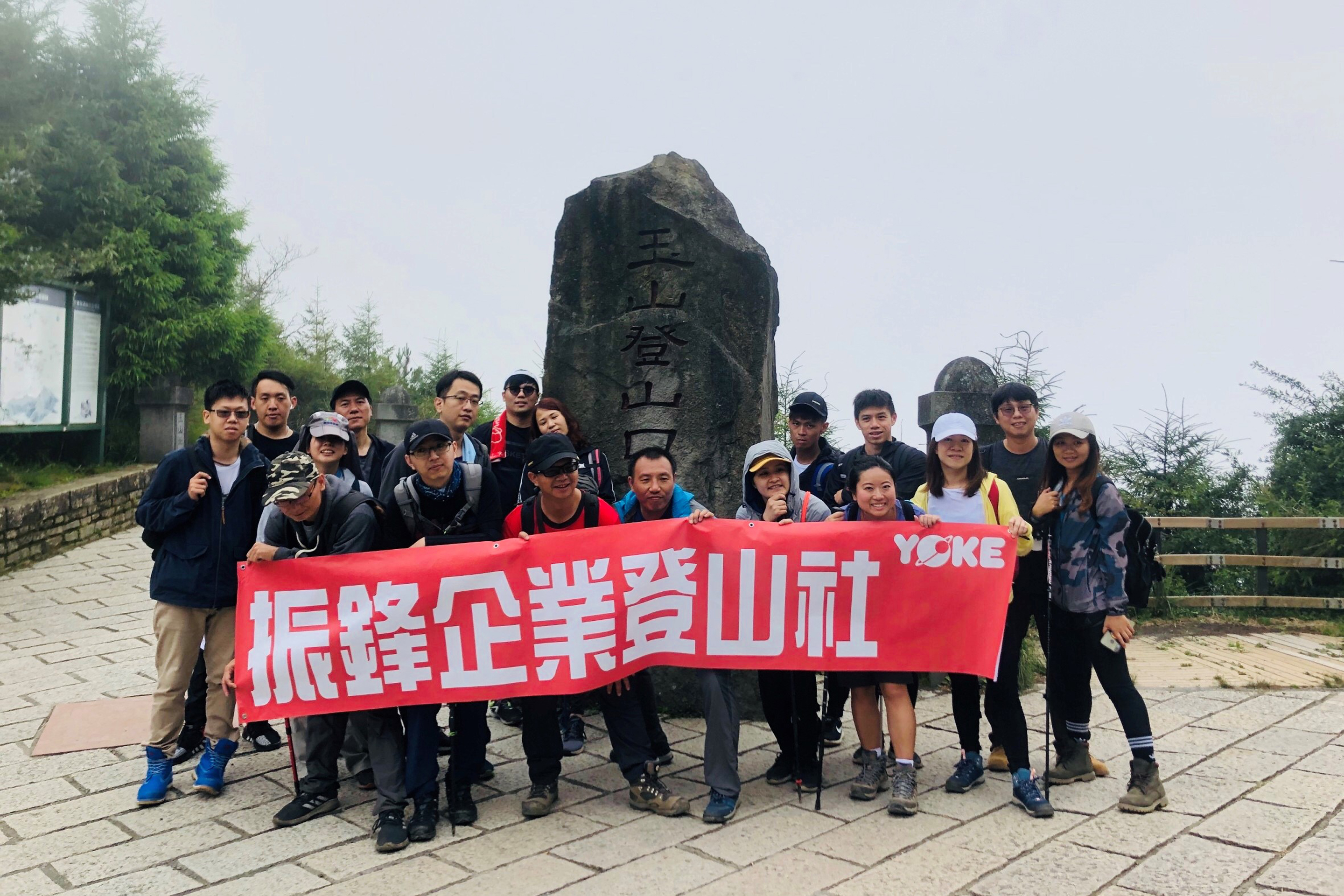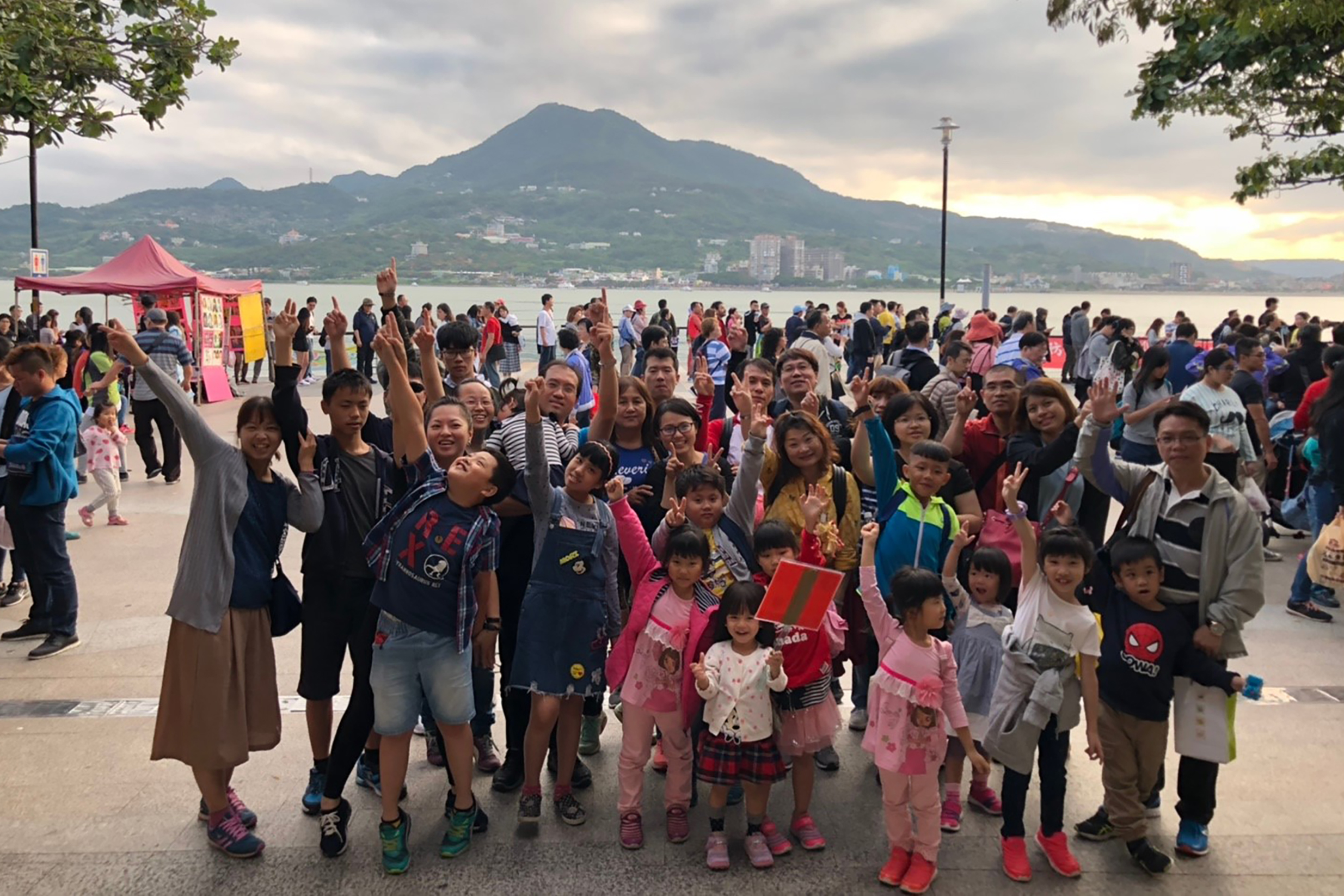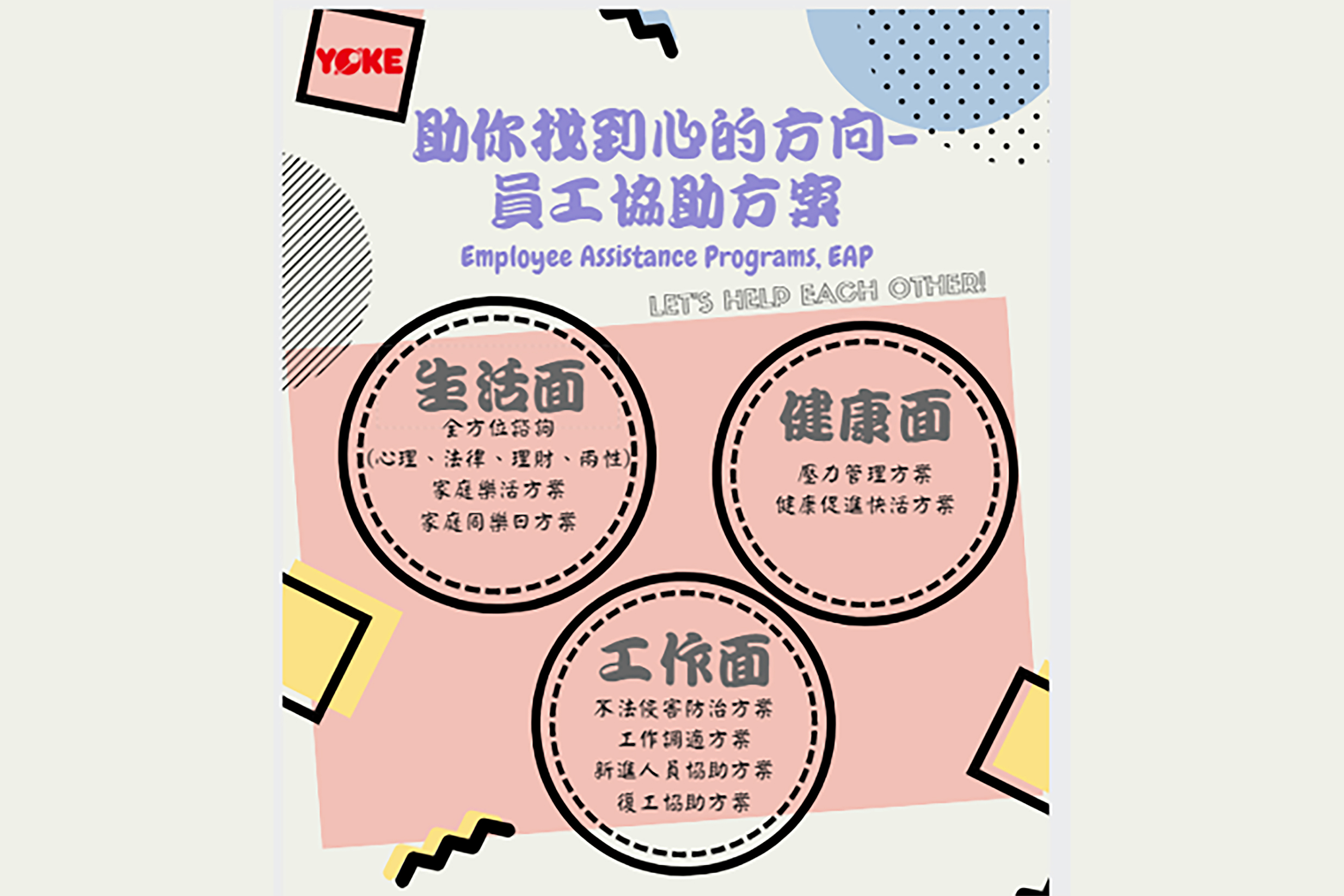Fostering Safety, Hygiene and Environmental-friendliness
Operation of the occupational safety and health management system
YOKE’s ISO 45001:2018 occupational health and safety management system covers Factory 1 and Factory 2, including activities for production and non-production sites. For equipment, the certification covers equipment used for routine and non-routine operation activities, including access of non-YOKE personnel entering our premises and contracted personnel (i.e. security guard, gardener and janitors). Although the factory 3 was not covered by the certification in certificate renewal in 2022, its OH&S management mechanism has been operated in accordance with the current management systems.
At present, the certification of ISO 45001 does not cover the factory 3. There are also four home offices overseas. By the end of 2022, the certification covered 427 full-time employees (accounting for 94.05% of all workers) and five employees (accounting for 1.10% of all workers) of contractors. Hence, the total coverage of certification was 95.15%. When promoting the actual operation of ISO 45001, the factory 3 was included in management for planning, management, and internal audits. By the end of 2022, 445 full-time employees (accounting for 98.02% of all workers) and five employees of contractors (accounting for 1.10% of all workers) were included in the internal audit. Hence, the total coverage of internal audit was 99.12%.
We have established the Occupational Safety and Health Committee in accordance with
the Regulations. Each members enjoys a term of office for two years. The committee holds a committee meeting quarterly. The general manager is the committee chair. The committee has 21 representatives, including 8 labor representatives (38.10%) and meeting the legal requirement that at least one third of all members are labor representatives. The Committee is responsible for communicating, participating and consulting on requirements and issues relating to pertinent occupational safety and health regulations, tracking YOKE’s annual OHS management objectives and reviewing training outcomes.
At the end of each year, the Committee conducts OHS hazard identification and risk assessment by engaging all departments to adhere to corresponding internal processes to determine the steps of operation, frequency of operation, chances for potential hazard and opportunities before taking existing protection and management measures into account in order to perform risk assessment and classification. The risk assessment is classified as unacceptable hazards and high risks and opportunities, and action planning is continued and included in the management plan for continuous tracking and management. In 2022, in addition to the management plans generated through risk assessment, a total of 28 management plans generated from other management measures were included in follow-up management. By the endo of 2022, the follow-up of 19 plans was completed, and the rest will be completed in 2023. At the end of 2022, we started the occupational safety and health risk assessment for 2023, 18 management plans required for validation were produced. We will complete the full planning of and then implement these management plans and periodically follow up the progress of improvement. In the operation of our management system, we have continued to arrange for various training courses on OHS to fortify relevant personnel’s professional competence and familiarity with our OSH management system.
For non-routine hazards, such as adding or changing products/services/processes, resulting in changes in the work environment, work organization, work conditions, equipment or labor, one must complete the "Environmental Safety and Health Change Management Evaluation Application" to re-examine hazard identification and risk assessment for the operation in question. In 2021, a total of 36 applications closed (closure rate of 95%). The improvement of the other two applications need the flash butt welding machine that will only shipped to the factory in 2023. In 2022, there were 41 applications, and 14 applications were closed. We will continue to follow up the unclosed applications until their completion. This will continue in 2023. After the risk assessment, the item may no longer be listed as an unacceptable hazard. Instead, the best improvement plan for the mitigation of risk is to improve the implementation sequence of elimination, replacement, engineering, improvement and so forth in conjunction with personnel qualification, proper warnings, the use of protective equipment, supervision of measurement, emergency response and relevant administrative measures to achieve continuous improvement and reduce risks.
During orientation training for new employees, we have made relevant advocacy on the right to refuse work in the event of emergencies with regards to labor safety. More specifically, should employees be exposed to imminent danger in their work environment, they are entitled to stop their work and retreat to a safe location provided they do not endanger the safety of other workers while doing so. And no disciplinary action will be given for recusal from work.
In accordance with ISO 45001 standards, YOKE has established its management procedure governing the investigation of accidents, which encompasses the identification of cause that led to the accident, hazard identification, measures for rectification and so forth and leading to continual care and follow-up as the basis for work resumption. Employees will not face disciplinary action for reporting specific working conditions that may cause harm or disease. Instead, the Company encourages all departments to propose environmental and safety improvement projects each month to optimize safety management of the work environment. In 2022 the number of near misses increased significantly over 2021 to 13 reports, suggesting that employee have higher faith in the improvement suggestion policy. In addition, we have also established a reward mechanism for employees who identify and report potential risk events. On the 10th of each month, the Company will commend the reporting employee with a bonus reward.

Safety management and improvement
We have divided the entire company premise into 21 regions, with each region assigned personnel responsible for inspecting the safety of the region. In addition, occupational safety personnel and supervisor will accompany the responsible personnel in the inspection of the region and convene review meetings on a monthly basis to discuss the observations made during the inspection and follow up on the improvements. We have also established scoring criteria for the designated personnel for the occupational safety region in order to achieve quantifiable management. If any defects found by the occupational safety personnel during the inspection can be improved immediately, it will be done within the shortest time. For those who need the assistance of other units, the assisting units will also complete the work in the shortest time possible. Some of the improvement cases that take longer will also be tracked through the mode of management program to make the operation of the environmental safety and health management system more smooth.
In order to avoid misunderstanding due to language differences, we have been organizing morning meetings for foreign employees on Tuesdays. Apart from communicating YOKE’s relevant policies and announcements, the meetings focused primarily on the advocacy of work safety. After all relevant information has been summarized and given to the translator for translation, the translation would be given to the manager responsible for the week’s morning meeting and the representative of foreign employees for dissemination.
In 2022 we continue the performance evaluation of safety and health management rating activated in 2021. Based on the pass score of 60 points, we will add and deduct points correspondingly, linking safety and health suggestions, rating regional safety responsible person, and the management requirement of deficiencies related to the inspection by occupational safety personnel, etc., with each unit's independent safety and health education and training and promotion, and encourage the reporting of false alarm incidents, and the unit that reports them will be able to add points by proposing improvement policies. Additionally, we also added contractor management as a bonus item for all regional safety responsible personnel to help contractors with safety management during operation. The average score of 2022 increase significantly from 68 points in 2021 to 85 points, suggesting that in addition to maintaining safety and health, each unit is also committed to improving safety and health and implementing various additional points. Apart from enabling all units to maintain all fundamental safety and health items, as the management performance rating can also encourage all units to implement safety and health activities, we will continue the rating in 2023 and will combine it with the performance evaluation of each supervisor.
To provide employees with a safer work environment, in 2022 we will further arrange the staff of Occupational Safety Office walk into each operation site to help observe work in collaboration with site supervisors to discover the hidden risks in operation, make improvement suggestions, and follow up the improvement in the form of an EHS program so as to make a closer tie of the ESH systems for better results. In 2022 a total of management plans were produced in this model, accounting for 25% of all management plans.
The factory safety and health of employees are our concerns and require improvement, and it is the same for contractors. Therefore, in 2022 we implemented the contractor safety and health management rating to rate the performance of 54 contractors. The results are: one contractor got an A (90 or higher points) and 53 contractors got a B (70-89 points). In addition to the deduction items in the past, we added a number of bonus items to encourage improvements, such as the safety and health education and training implemented by the contractors, group insurance covering the contractors' employees, and the reporting and improvement of the safety and health hazards of the contractors themselves. The base score for each contractor is 80 points, and the actual score is calculated each quarter to provide a reference for the annual contractor rating to ensure objectivity and impartiality. Each contractor is given 80 points and the points are settled quarterly. This is used as the source of the annual evaluation of the contractors in order to be more objective and fair.
Safety Training
Each year we establish the annual occupational safety and health training program. Apart from the basic orientation training for new employees, we also arranged 10 OTJ and contractor training activities in 2022, with a total of 220 participants. In collaboration with the Procurement Department, we
asked all major suppliers to sign and submit our “Manufacturer’s Occupational Safety Commitment” to be submitted. We also request new suppliers to sign the commitment before placing orders. In addition to the general requirements for operation safety, we also request contractors to arrange health checkups and safety and health education and training for their employees in compliance with the relevant occupational safety and health laws and regulations. Contractors are required to apply and be approved prior to construction, and are required to inform the contractor of the hazards of the contracted work prior to construction; all applications for construction were in electronic form from 2021 onward, and in addition to safety management, the concept of paperless environmental protection will be incorporated.
To get prepared for any emergencies, we have developed contingency processes for situations such as fire, earthquake, typhoon, power outage, accident of contractor operation, food poisoning, notifiable diseases/epidemic diseases or related injuries. Emergency drills are conducted every year to enhance the response capability of all employees. In 2022, all employees participated in the evacuation drills for fires, chemical spills, and earthquakes and the self-defense task force drills. In addition to continuing the pattern the routine fire drills, in 2023, will also plan individual contingency drills based on the attributes of each unit.
| Type of training | Orientation training | On-the-job training | Contractor training |
|---|---|---|---|
| No. of sessions | 53 | 9 | 1 |
| No. of participants | 159 | 40 | 21 |

Performance of safety management
We make it a point to keep track and follow up on incidents of disabling injuries so that we can track employees who have suffered disabling injuries and even minor injuries to provide proper care. In 2022 there were three disabling injuries reported, including pinch, cut, and one serious occupational accident. The average lost working days were 14 days, one day more than 2021. The root cause has been analyzed and improved properly.
In addition, we have had no cases of occupational diseases in the past and had zero fatalities caused by occupational diseases or disasters. In addition, there were no occupational disasters such as death, disability, or occupational diseases in 2022 for outsourced personnel. Additionally, we also disclosed the quantitative data of the total recordable incident rate (TRIR), near miss frequency rate (NMFR) as requested in the Sustainability Accounting Standards.
Note: For detailed information, please refer to pages 91 and 92 of the Corporate Sustainability Report.





